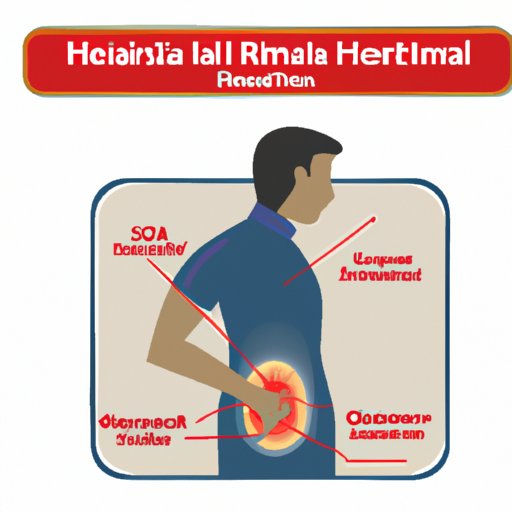
I. Definition-based approach
A hiatal hernia is a condition that occurs when the upper part of the stomach bulges through the diaphragm. The diaphragm is a muscle that separates the chest cavity from the abdominal cavity. Hiatal hernias are common and can occur in people at any age. They are often asymptomatic, but they can cause discomfort and pain in some cases.
II. Risk factor-driven approach
Age and gender are two risk factors that increase the likelihood of developing a hiatal hernia. As people age, the muscles in their diaphragm weaken, making them more susceptible to hernias. Women are more likely to develop hiatal hernias than men, and some experts believe that hormonal changes may play a role. Diet and lifestyle habits, such as overeating or eating before bedtime, can also increase the risk of developing a hiatal hernia. Smoking and alcohol consumption can also weaken the muscles in the diaphragm and make it easier for the stomach to push through.
III. Genetics-based approach
Some people may be more susceptible to hiatal hernias due to a genetic predisposition. For example, connective tissue disorders, such as Marfan syndrome, can weaken the connective tissue in the diaphragm and make it easier for a hernia to occur. Family history can also be a factor, as the condition may be inherited.
IV. Anatomy-based approach
The structure and mechanics of the digestive system can also play a role in the development of hiatal hernias. The esophagus, which carries food from the mouth to the stomach, passes through an opening in the diaphragm called the hiatus. In some cases, the opening can become enlarged, allowing the stomach to push through and causing a hernia. The hiatus can also weaken with age or due to injury, increasing the risk of a hernia occurring.
V. Lifestyle-based approach
Lifestyle factors such as diet, exercise, and stress management can impact the risk of developing a hiatal hernia. Certain foods, such as spicy or acidic foods, can trigger symptoms like heartburn or acid reflux, which can exacerbate a hiatal hernia. Regular exercise can help strengthen the muscles in the diaphragm and reduce the risk of hernias. Managing stress through techniques like meditation or therapy can also alleviate symptoms of hiatal hernias.
VI. Medical condition-driven approach
Obesity and pregnancy can increase the risk of developing a hiatal hernia. Excess weight can put pressure on the diaphragm and weaken the muscles, making it easier for a hernia to occur. Pregnancy can also put pressure on the diaphragm and cause a hernia to develop. Connective tissue disorders, as previously mentioned, can also increase the susceptibility to developing hiatal hernias.
VII. Treatment-focused approach
Common treatments for hiatal hernias include medications to relieve symptoms such as antacids or proton pump inhibitors. Lifestyle adjustments such as dietary changes or weight loss through regular exercise can also alleviate symptoms and reduce the risk of hernias. In more severe cases, surgery may be necessary to repair the opening in the diaphragm and prevent the stomach from pushing through. The pros and cons of each treatment option should be discussed with a doctor.
VIII. Conclusion
Hiatal hernias are a common condition that can cause discomfort and pain, but they can be managed through a combination of lifestyle adjustments and medical treatments. It is important to understand the risk factors and symptoms of hiatal hernias and to seek treatment if necessary. By taking care of your body and managing risk factors, you can reduce the likelihood of developing a hiatal hernia and improve your overall health.




